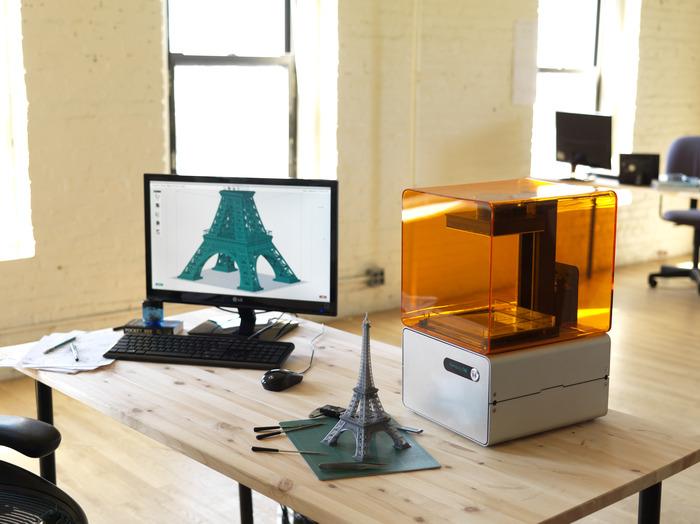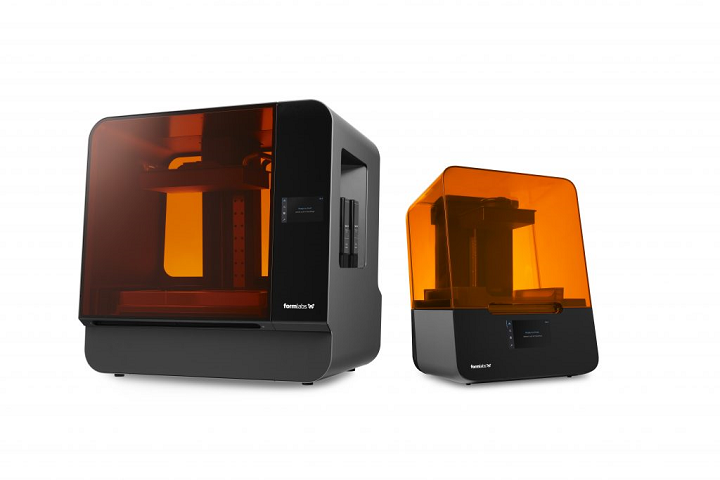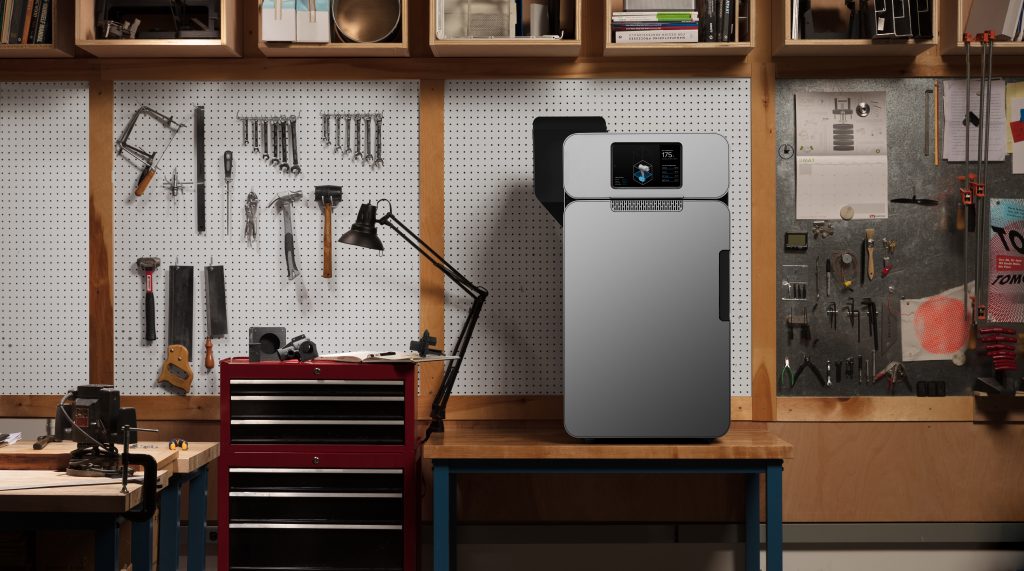When a privately held startup hits $1 billion in value, it magically transforms from an ugly mare into a beautiful unicorn (or so the legend goes). In the 3D printing space, there are three such creatures and we’ll be profiling each one, beginning with the oldest: Formlabs.
The Boston-based company was born out of MIT Media Lab, where its co-founders, Maxim Lobovsky, Natan Linder and David Cranor met as students learning about the newly hyped technology of 3D printing. The trio went on to establish Formlabs in September 2011 with the Form 1.
What made the Form 1 so remarkable was that it was the first desktop SLA 3D printer, bringing quality associated with much more expensive systems to under $5,000 (the original base package was just $2299 for early birds). And it did so via Kickstarter, raising nearly $3 million and becoming one of the most successful crowdfunding campaigns for 3D printing.
The firm continued to sell and develop, which is a lot more than can be said for some other crowdfunded companies (looking at you, Pirate3D). This resulted in the release of the Form 1+, Form 2, Form 3 and Form 3L, all representing improvements in the hardware architecture and/or size of the printer. Most recently, the company added the Form 3B, dedicated to biocompatible materials, including resins for 3D printing surgical guides.
With the Form 3 and 3L (released in 2019), Formlabs introduced “low force stereolithography (LFS),” a re-engineering of its previous SLA process, wherein the forces of suction of the part on the optical window were too strong for certain geometries and materials. In LFS, a redesigned optics system made up of lenses, mirrors and a galvanometer directs a laser beam directly perpendicular to the build plane, resulting in the ability to print in finer details and lighter support structures. The optical window, and indeed the frame holding it, flex which reduces the forces acting on the part.
But Formlabs didn’t limit itself to just SLA or even LFS. In 2017, the firm confirmed it was working on the Fuse 1, one of a very low number of desktop SLS 3D printers. By this point, it was more clear than ever that Formlabs wasn’t just a startup, but was evolving into something more… majestic? Well, at least something much more significant because it was no longer just selling printers on Kickstarter, but had established a global presence mainly selling direct but also an extensive reseller and distribution network.
That isn’t to say that it didn’t face its share of obstacles. Along the way, in 2012, it was sued by the original inventor of SLA, 3D Systems, for patent infringement before the two reached a licensing settlement netting the larger of the two companies 8% of every sale. Formlabs was sued once again in 2016 by DLP inventor EnvisionTEC. The startup had officially made the big leagues.
In fact, the company is so substantial at this point that it’s not just being sued by the big dogs, but it’s becoming a big dog itself. Formlabs announced its first acquisition, that of Spectra Group Photopolymers, who has supplied its parent company with resins since the Form 1 days. With the purchase, Formlabs will be investing over $1 million into renovating Spectra’s facilities to become an FDA registered, ISO Class 8 certified cleanroom in an ISO 13485 certified facility for dental and medical materials development.
After early seed funding from investors that included Eric Schmidt’s Innovation Endeavors, the startup concluded Series A Funding of $19 million in 2013. Series A led to Series B ($35 million in 2016), which led to Series C ($30 million in 2018). With a $15 million infusion (also in 2018), Formlabs added former GE CEO Jeff Immelt to its board of directors. At this point, the startup was valued at over $1 billion, officially transforming Formlabs from a beast of burden into a mythical unicorn.
Join the discussion of this and other 3D printing topics at 3DPrintBoard.com.
Subscribe to Our Email Newsletter
Stay up-to-date on all the latest news from the 3D printing industry and receive information and offers from third party vendors.
You May Also Like
New Report: Semiconductor Industry to See $1.4B in 3D Printing Revenues by 2032
“The semiconductor sector has become the most strategically significant area of global industry.” Truer words are hard to come by when it comes to the modern world, and they are...
Will Photonic-Crystal Lasers Revolutionize 3D Printing?
Powder bed fusion (PBF) for metals and polymers predominantly utilizes lasers as the primary heat source. Some directed energy deposition (DED) technologies also employ lasers, while various vat polymerization methods...
3D Printing Unpeeled: Orbex Investment, IndoMIM and HP, Ultrasonic Waves
INDO-MIM has bought three HP Metal Jet S100 printers, operating two in India and one in Texas. This is a win for HP because the company has deep experience in...
3D Printing Webinar and Event Roundup: April 21, 2024
It’s another busy week of webinars and events, starting with Hannover Messe in Germany and continuing with Metalcasting Congress, Chinaplas, TechBlick’s Innovation Festival, and more. Stratasys continues its advanced training...


































